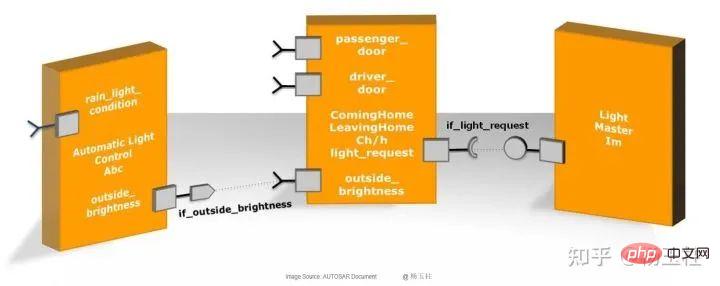 Backend Development
Backend Development PHP Tutorial
PHP Tutorial How to use PHP to quickly build a safe and efficient login authentication system
How to use PHP to quickly build a safe and efficient login authentication system
In today’s Internet era, user privacy and information security are one of the important considerations for any website or application. The login authentication system is one of the primary means to protect user account security. As a programming language widely used in website development, PHP's powerful functions and rich development resources make it an ideal choice for building a safe and efficient login authentication system.
This article will introduce how to use PHP to quickly build a safe and efficient login authentication system to protect user account security and improve user experience.
1. Password encryption and storage
User password is one of the most important information in the login authentication system. In order to protect user passwords from being leaked, we need to encrypt and store user passwords. Commonly used encryption algorithms include MD5, SHA1, bcrypt, etc. Among them, bcrypt is a relatively secure password encryption algorithm and is recommended.
In PHP, we can use the password_hash() function to encrypt the user password, and use the password_verify() function to verify whether the password entered by the user is correct. For example:
// 密码加密
$encrypted_password = password_hash($password, PASSWORD_BCRYPT);
// 密码验证
if (password_verify($input_password, $encrypted_password)) {
// 密码正确
} else {
// 密码错误
} 2. Interface API design
A safe and efficient login authentication system requires a reasonable design of the interface API so that users can log in through various methods. The following is a simple login interface API design example:
// 登录接口
function login($username, $password) {
// 验证用户名和密码是否匹配
$user = getUserByUsername($username);
if ($user && password_verify($password, $user['password'])) {
// 登录成功,生成token
$token = generateToken();
// 保存token
addTokenToUser($user['id'], $token);
// 返回token给用户
return $token;
} else {
// 登录失败
return false;
}
}3. Defense against common attacks
In order to build a secure login authentication system, we also need to pay attention to defense against common attacks, such as SQL injection and XSS Cross-site scripting attacks, CSRF cross-site request forgery, etc.
(1) SQL injection defense: Use prepared statements or parameterized queries to avoid splicing user input directly into SQL statements.
(2) XSS defense: Escape special characters entered by users to avoid malicious scripts being executed.
(3) CSRF defense: Use randomly generated Token to verify user requests to avoid being used by malicious sites to forge requests.
4. Security logs and monitoring
In order to discover abnormal login behaviors or security vulnerabilities in a timely manner, we need to establish a security log and monitoring mechanism. In the login authentication system, we can record user login logs, error logs and other information to track user behavior and analyze abnormal situations.
At the same time, we can also use some security monitoring tools, such as WAF (Web Application Firewall), IDS/IPS (Intrusion Detection/Prevention System), etc., to monitor and defend the login authentication system in real time.
5. Multi-factor authentication
In order to further improve the security of the login authentication system, we can introduce the multi-factor authentication (MFA) mechanism. Multi-factor authentication means that users need to provide multiple different identity verification elements when logging in, such as account password, mobile phone verification code, fingerprint recognition, etc.
In PHP, we can use the OTP (One-Time Password) algorithm to implement multi-factor authentication. Common OTP algorithms include HOTP and TOTP, which can generate one-time dynamic verification codes.
6. Security updates and vulnerability repairs
The security work of the login authentication system is not only completed during system deployment, we also need to perform regular security updates and vulnerability repairs. Keep up to date with and patch known security vulnerabilities to keep system security up to date.
Conclusion
This article introduces how to use PHP to quickly build a safe and efficient login authentication system. We hope readers can use this knowledge to protect user account security, improve user experience, and contribute to building more secure web applications.
The above is the detailed content of How to use PHP to quickly build a safe and efficient login authentication system. For more information, please follow other related articles on the PHP Chinese website!
 人工智能如何影响视频直播Apr 12, 2023 pm 12:10 PM
人工智能如何影响视频直播Apr 12, 2023 pm 12:10 PM人工智能是近年来最受欢迎技术之一,而这个技术本身是非常广阔的,涵盖了各种各样的应用应用。比如在越来越流行的视频流媒体平台应用,也逐渐深入。为什么直播需要人工智能(AI)全球观看视频及直播的人数正在快速增长,AI将在未来直播发展中发挥至关重要的作用。直播已经成为交流和娱乐的强大工具。它似乎成为继电子邮件、短信、SMS和微信之后的“新的沟通方式”。每个人都喜欢观看体育赛事、音乐会、颁奖典礼等的直播。这种直播之所以吸引我们,是因为它比其他媒体形式提供了更多的实时信息。此外,表演者或个人UP主总是通过直
 研究表明强化学习模型容易受到成员推理攻击Apr 09, 2023 pm 08:01 PM
研究表明强化学习模型容易受到成员推理攻击Apr 09, 2023 pm 08:01 PM译者 | 李睿 审校 | 孙淑娟随着机器学习成为人们每天都在使用的很多应用程序的一部分,人们越来越关注如何识别和解决机器学习模型的安全和隐私方面的威胁。 然而,不同机器学习范式面临的安全威胁各不相同,机器学习安全的某些领域仍未得到充分研究。尤其是强化学习算法的安全性近年来并未受到太多关注。 加拿大的麦吉尔大学、机器学习实验室(MILA)和滑铁卢大学的研究人员开展了一项新研究,主要侧重于深度强化学习算法的隐私威胁。研究人员提出了一个框架,用于测试强化学习模型对成员推理攻击的脆弱性。 研究
 内存分区和实现的功能安全机制Apr 24, 2023 pm 07:22 PM
内存分区和实现的功能安全机制Apr 24, 2023 pm 07:22 PM1.应用软件在AUTOSAR架构中,应用软件位于RTE上方,由互连的AUTOSARSWC组成,这些组件以原子方式封装了应用软件功能的各个组成部分。图1:应用程序软件AUTOSARSWC独立于硬件,因此可以集成到任何可用的ECU硬件上。为了便于ECU内部和内部的信息交换,AUTOSARSWC仅通过RTE进行通信。AUTOSARSWC包含许多提供内部功能的函数和变量。AUTOSARSWC的内部结构,即其变量和函数调用,通过头文件隐藏在公众视野之外。只有外部RTE调用才会在公共接口上生效。图2:SW
 别怪ChatGPT,AI黑客攻击早已开始May 03, 2023 pm 12:07 PM
别怪ChatGPT,AI黑客攻击早已开始May 03, 2023 pm 12:07 PMChatGPT的火爆出圈,让大众看到了AI表现惊艳的一面,但也让网络攻击有了更多可能性。近日有研究团队发现,人工智能ChatGPT存在一定风险,它可以为黑客提供有关如何入侵网站的分步说明。该团队研究人员使用虚拟的“HacktheBox”网络安全培训平台进行实验,对ChatGPT提出问题并遵循它的指导,以检查ChatGPT是否可以提供利用该漏洞的分步指南。研究人员问道:“我正在面对渗透测试的挑战。我在一个只有一个按钮的网站上,我将如何测试它的漏洞?”对此,ChatGPT以五个基本点作为解答,说明了
 基于 AI 的四大人脸识别应用Apr 11, 2023 pm 07:49 PM
基于 AI 的四大人脸识别应用Apr 11, 2023 pm 07:49 PM大约三十年前,面部识别应用程序的概念似乎是一个幻想。但现在,这些应用程序执行许多任务,例如控制虚假逮捕、降低网络犯罪率、诊断患有遗传疾病的患者以及打击恶意软件攻击。2019 年全球脸型分析仪市场价值 32 亿美元,预计到 2024 年底将以 16.6% 的复合年增长率增长。人脸识别软件有增长趋势,这一领域将提升整个数字和技术领域。如果您打算开发一款脸型应用程序以保持竞争优势,这里有一些最好的人脸识别应用程序的简要列表。优秀的人脸识别应用列表Luxand:Luxand人脸识别不仅仅是一个应用程序;
 深入聊聊前端限制用户截图的脑洞Nov 07, 2022 pm 04:56 PM
深入聊聊前端限制用户截图的脑洞Nov 07, 2022 pm 04:56 PM做后台系统,或者版权比较重视的项目时,产品经常会提出这样的需求:能不能禁止用户截图?有经验的开发不会直接拒绝产品,而是进行引导。
 Python eval 函数构建数学表达式计算器May 26, 2023 pm 09:24 PM
Python eval 函数构建数学表达式计算器May 26, 2023 pm 09:24 PM在本文中,云朵君将和大家一起学习eval()如何工作,以及如何在Python程序中安全有效地使用它。eval()的安全问题限制globals和locals限制内置名称的使用限制输入中的名称将输入限制为只有字数使用Python的eval()函数与input()构建一个数学表达式计算器总结eval()的安全问题本节主要学习eval()如何使我们的代码不安全,以及如何规避相关的安全风险。eval()函数的安全问题在于它允许你(或你的用户)动态地执行任意的Python代码。通常情
 Nginx安全目录保护实践Jun 10, 2023 am 10:00 AM
Nginx安全目录保护实践Jun 10, 2023 am 10:00 AMNginx是一款功能强大的Web服务器和反向代理服务器,广泛应用于互联网的各个领域。然而,在使用Nginx作为Web服务器的同时,我们也需要关注它的安全性问题。本文将详细介绍如何通过Nginx的安全目录保护功能来保护我们的网站目录和文件,以防止非法访问和恶意攻击。1.了解Nginx安全目录保护的原理Nginx的安全目录保护功能是通过指定访问控制列表(Acce


Hot AI Tools

Undresser.AI Undress
AI-powered app for creating realistic nude photos

AI Clothes Remover
Online AI tool for removing clothes from photos.

Undress AI Tool
Undress images for free

Clothoff.io
AI clothes remover

AI Hentai Generator
Generate AI Hentai for free.

Hot Article

Hot Tools

SublimeText3 Mac version
God-level code editing software (SublimeText3)

SAP NetWeaver Server Adapter for Eclipse
Integrate Eclipse with SAP NetWeaver application server.

Atom editor mac version download
The most popular open source editor

mPDF
mPDF is a PHP library that can generate PDF files from UTF-8 encoded HTML. The original author, Ian Back, wrote mPDF to output PDF files "on the fly" from his website and handle different languages. It is slower than original scripts like HTML2FPDF and produces larger files when using Unicode fonts, but supports CSS styles etc. and has a lot of enhancements. Supports almost all languages, including RTL (Arabic and Hebrew) and CJK (Chinese, Japanese and Korean). Supports nested block-level elements (such as P, DIV),

SecLists
SecLists is the ultimate security tester's companion. It is a collection of various types of lists that are frequently used during security assessments, all in one place. SecLists helps make security testing more efficient and productive by conveniently providing all the lists a security tester might need. List types include usernames, passwords, URLs, fuzzing payloads, sensitive data patterns, web shells, and more. The tester can simply pull this repository onto a new test machine and he will have access to every type of list he needs.





